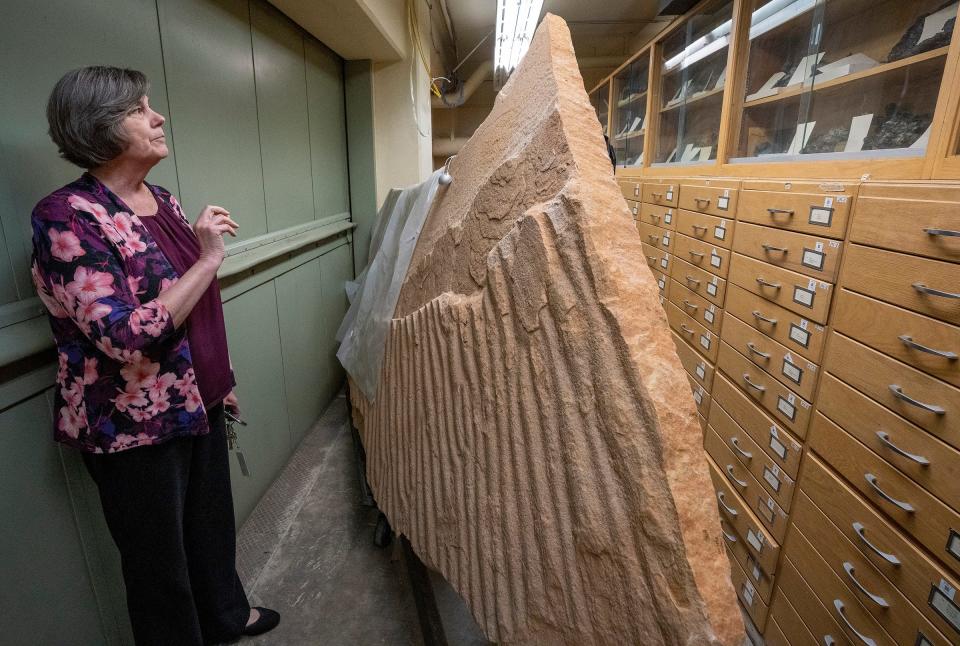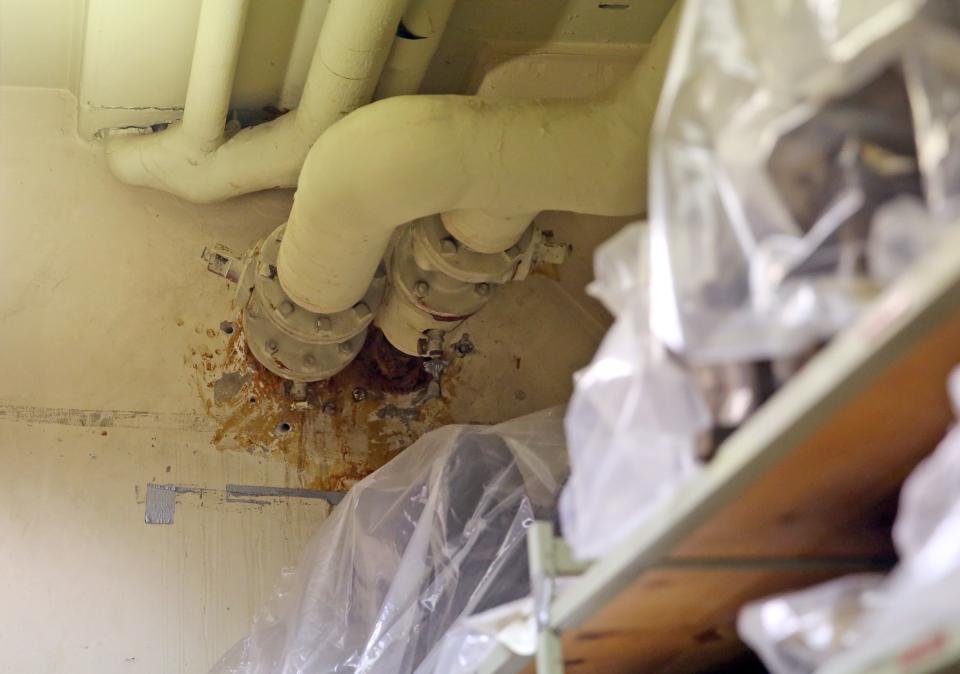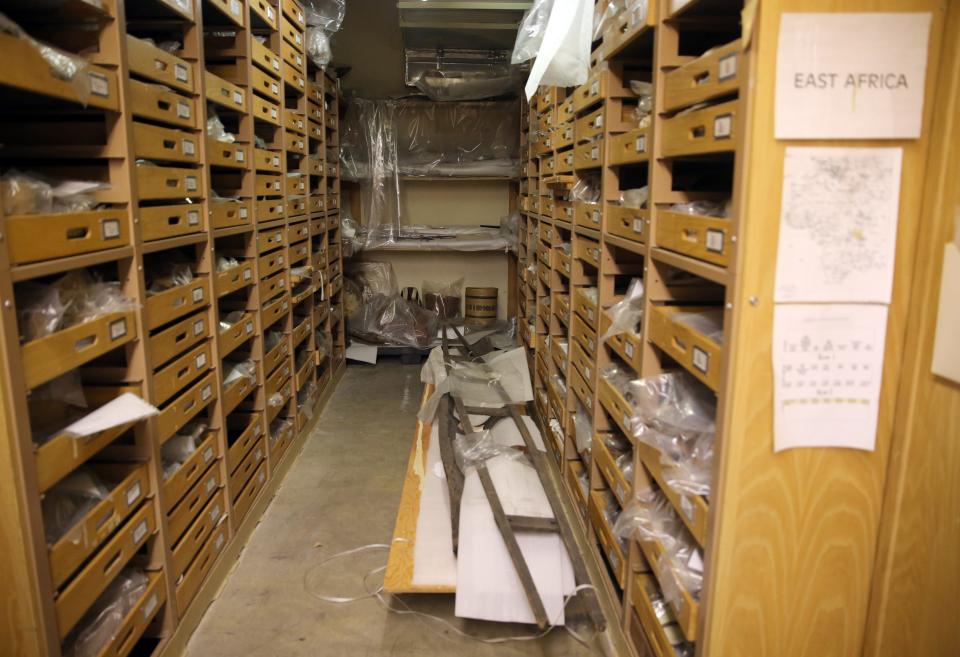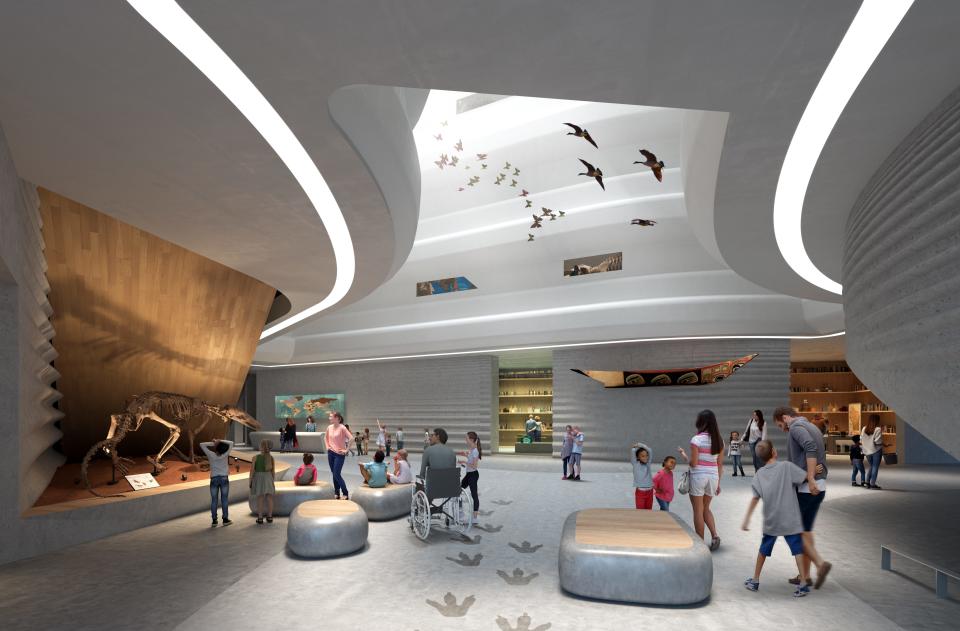What's happening to the Milwaukee Public Museum? Here's the latest on its moving plans.
The Milwaukee Public Museum likely will be settling into its new home by late 2026.
Updates have trickled in since 2017, when the Milwaukee Public Museum announced it would be moving.
The parcels of land, at West McKinley Avenue and North Sixth Street, near Fiserv Forum, were purchased in February 2021. Architects unveiled designs for the new museum in July 2022.
But the public began paying even closer attention in early 2023 when museum leaders said certain hard-to-move exhibits such as the Streets of Old Milwaukee would not be making the move to the new site, sparking public uproar.
Here's what we know about the plans.
Is the Milwaukee Public Museum closing permanently?
The museum is not closing, but will be moving.
Museum officials in 2017 announced it would move from the building at 800 W. Wells St. after a study found renovating and moving would be similarly costly.
The new museum is tentatively named the Wisconsin Museum of Nature and Culture.
What's wrong with the Milwaukee Public Museum's current building?

The current facility requires $100 million in deferred capital maintenance, the museum said on its website.
Built in 1963, the archives are located in a leaky and humid basement unfit for modern storage standards, the museum has said.
"The structure itself was originally constructed without insulation or moisture barriers, resulting in decades of humidity and temperature control issues that jeopardize the collections and result in significant utilities expenses," the museum said on its website.
Leaks spring in dozens of places around the building with each rainfall, requiring museum staff to place buckets around the facility.
Pipes for water and sewage also run through the middle of the 33,000-square-foot basement. A 2015 Milwaukee Journal Sentinel story documented one case in which wastewater spilled onto 1930s quilts from the Works Progress Administration. Cleaning the quilts and the mess cost $100,000, according to the article.

Museum president Ellen Censky told WMTJ-TV (Channel 4) in a 2022 report that it would be "catastrophic" if one of the pipes burst, as the artifacts in storage are irreplaceable.
The basement has "stalactites growing from the ceiling due to moisture," the television report said. In one room, "virtually everything is covered in plastic. There are cracks in the ceiling and walls, along with interior gutters and hanging buckets to catch leaking water."

Many of the museum's 4 million artifacts are also stored on wooden trays on shelves. The trays release acidic gases that can damage ancient items like fabrics and pottery, according to the 2015 article. Current standards require metal cabinets with climate controls.
The museum's escalators and elevators are also too small to handle modern strollers, wheelchairs and scooters and frequently break down, the museum said.
Plus, the "480,000-square-foot building is significantly oversized for our needs," the museum said. There is currently about 150,000 square feet of exhibit space.
Museum leaders plan a new 200,000-square-foot building with 80,000 square feet of exhibit space. It would be more efficient to operate the smaller building, leaders have said, with a greater share of the space dedicated to exhibits.
Additional collections would be housed at a separate off-site storage facility.
Was the museum's accreditation at risk, and why does that matter?

The museum's accreditation was at risk because of the dilapidated state of the building.
The museum was up for a review of its accreditation in 2021. The American Alliance of Museums allowed it to be delayed a year so leaders could demonstrate the artifacts could be cared for as they prepared to move buildings.
Here's what Evans Richardson, chair of the Accreditation Commission, said in a letter at the time:
"The materials the Commission reviewed are clear and convincing that the building, suffering from years of structural neglect and deferred maintenance, is utterly inadequate to meet even the most minimal standards of care for the collections."
Richardson also said the museum was "facing severe challenges with an inadequate facility that imperils the collections and diverts resources from other areas of need."
The reaccreditation was eventually approved in 2022.
Losing accreditation would have endangered the museum's ability to borrow from and lend to other museums' collections, host major touring exhibits and seek government grants — big sources of revenue.
What will the new museum look like?
A team of architects drew inspiration for the museum's design from the rock columns in Mill Bluff State Park, near Camp Douglas in central Wisconsin.
The first floor commons will feature a sunlit light well and will have access to a café. Designers were inspired by the confluence of three Milwaukee rivers: the Milwaukee, Kinnickinnic and Menomonee.
Some spaces will allow visitors to peek through windows at collections in storage.
There will also be an outdoor plaza, classrooms and a planetarium, museum leaders said.
More:As Milwaukee Public Museum prepares for new home, what current exhibits matter to you?
Which exhibits will the new museum have?
The new museum will have a butterfly vivarium as the current one does, museum leaders said.
Aside from the butterflies, the museum has been tight-lipped so far about which exhibits from the current museum will be incorporated at the new site, and how they will look.
The museum plans to release more detailed exhibit plans in spring. Staff are working to balance familiar elements with new experiences, they said.
Museum officials have said the new space will better display its collection of historical artifacts and will include more culturally relevant exhibits.
The goal is to showcase how "nature and culture are interwoven," according to the museum's website.
Museum leaders have decided on five themes that will run through the new exhibits:
Sustaining life, migration and habitation, change and evolution, ways of knowing, and forces and relations.

Will the Streets of Old Milwaukee move to the new museum?
Museum officials said the Streets of Old Milwaukee, a popular walk-through diorama depicting shops and homes in the city at the turn of the 20th century, would not be moved to the new site.
Museum officials said the exhibit was too expensive and difficult to physically deconstruct and rebuild in the new location, as several structures are built into the facility itself.
But another immersive walk-through exhibit about the city's history is expected.
How much will it cost to design and build the new museum?

The total cost of the new museum project is estimated at $240 million.
That includes about:
$182 million to design and construct the new museum and its exhibits
$8 million to purchase the land
$25 million for the museum's endowment
$20 million to move the collections
$5 million to pay for the fundraising campaign and project management.
Museum leaders have estimated that it would cost $250 million if they were to renovate and update the current building and its exhibits.
Where is the financing for the new museum coming from?
Of the $240 million tab, $117 million has already been raised.
That includes:
$40 million from the State of Wisconsin
$45 million from Milwaukee County
$32 million in private donations
The museum has also requested about $5.8 million in federal grants.
The museum is seeking a total of $150 million in private donations.
Is the museum taxpayer-funded?
The museum is technically a nonprofit group that houses collections owned by Milwaukee County.
So, Milwaukee County owns the 4 million items in the museum's exhibits and storage as well as the museum building.
The nonprofit known as Milwaukee Public Museum leases the building from the county to run museum operations and to care for the collections.
The county now provides $3.5 million annually to help finance the operations of the museum.
With the $45 million grant, that annual support will drop to $1 million once the new museum opens.
What opportunities are there to give the museum feedback?
Museum leaders have held workshops, surveys, town hall meetings and more to solicit feedback from members of the community.
People who want to share their opinion about the future museum can email future@mpm.edu.
Tom Daykin of the Journal Sentinel staff contributed to this report.
This article originally appeared on Milwaukee Journal Sentinel: What's happening to the Milwaukee Public Museum? Here's the latest.

